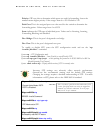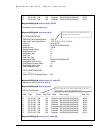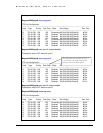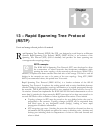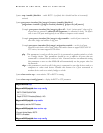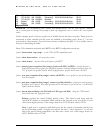
Chapter
13
13 – Rapid Spanning Tree Protocol
(RSTP)
Create and manage alternate paths to the network
apid Spanning Tree Protocol (RTSP), like STP, was designed to avoid loops in an Ethernet
network. Rapid Spanning Tree Protocol (RSTP) (IEEE 802.1w) is an evolution of the
Spanning Tree Protocol (STP) (802.1d standard) and provides for faster spanning tree
convergence after a topology change.
R
R
T
th
STP concepts
he IEEE 802.1d Spanning Tree Protocol (STP) was developed to allow
e construction of robust networks that incorporate redundancy while
pruning the active topology of the network to prevent loops. While STP is
effective, it requires that frame transfer must halt after a link outage. This halt is until all
bridges in the network are sure to be aware of the new topology. Using STP (IEEE
802.1d) recommended values, this period lasts 30 seconds.
j
Rapid Spanning Tree Protocol (IEEE 802.1w) is a further evolution of the 802.1d
Spanning Tree Protocol. It replaces the settling period with an active handshake between
switches (bridges) that guarantees topology information to be rapidly propagated through
the network. IEEE 802.1D-2004 proposes a new standard for faster recovery for up to
16 switches. GarrettCom implements the IEEE 802.1D-2004 and enhancements to cover
more than 16 switches for larger networks. RSTP converges in less than one second to six
seconds. RSTP also offers a number of other significant innovations. These include
• Topology changes in STP must be passed to the root bridge before they can be
propagated to the network. Topology changes in RSTP can be originated from
and acted upon by any designated switch (bridge), leading to more rapid
propagation of address information
• STP recognizes one state - blocking for ports that should not forward any data or
information. RSTP explicitly recognizes two states or blocking roles - alternate and
backup port including them in computations of when to learn and forward and
when to block
159



